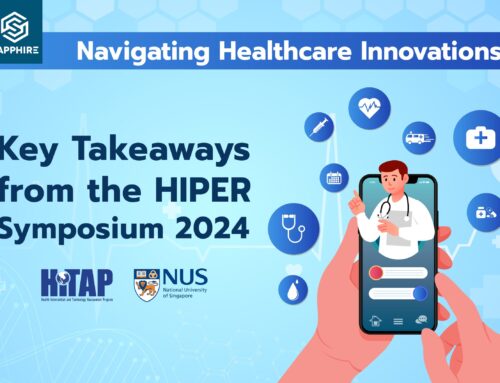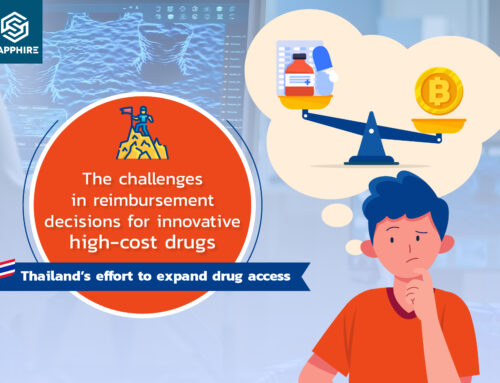
This essay is one in a series of essays published by HITAP from students who studied the Masters in Primary Health Care Management at the ASEAN Institute for Health Development and Faculty of Graduate Studies at Mahidol University. HITAP staff assisted in teaching on the course ADPM 613 Health Economics and the essays featured on the HITAP website were examination answers submitted by students on the course.
As a part of my master’s study in primary health care management at Mahidol University (MU), I participated in a health economics course jointly run by MU and HITAP from June to July 2021. During the workshop, I got the opportunity to learn about creating criteria and processes for resource allocation. I found it extremely important as Vietnam, my country, is still a low-middle income country. The available resources are not enough to meet all the various health needs of people or the requirements of the health sectors. Setting up the criteria and a process for priority-setting can help to ensure the efficient and rational use of these scarce resources and the sustainability of the health care system in the long term.
Resources allocation and its importance
To my understanding, resource allocation is “the task of determining the priority to be assigned to a service, a service development, or an individual patient at a given point in time”. As the scarcity of resources is one of the biggest challenges of many health systems, even in developed countries, it is necessary to ensure the investment or utilization of these resources is effective and generates the maximum benefit. In order to perform the function of providing health care services and meeting the population’s expectations, the health sector requires many resources, including monetary, human resources, medical equipment and medicine, etc.
While all these inputs are limited, the claims for health resources have increased continually. In Vietnam, the ageing population is a growing issue as we have the greatest pace of ageing worldwide. Along with the increasing number of elderly, there is a rise in patients with non-communicable diseases and disabilities. In the COVID-19 pandemic, you can imagine how enormous the health needs that people require are. In addition, the remarkable development of health technologies also contributes to more accurate diagnosis and better treatment, and higher costs of care. In this context, prioritization is highly needed to ensure the sustainability of the health system and maximize the benefits for the population at the same time. Moreover, due to inefficient use of resources, scarce resources are also wasted. Thus, the role of resource allocation is essential.
The need to have explicit steps and criteria for resource allocation
As I mentioned above, the health needs of people are numerous, and it is difficult to say what should be considered as a priority and what should not. It is similar to the question of which areas in the health care sector should be invested in more and what can be delayed. We can agree that resources allocation is essential, but what is even more critical is how these decisions are made. In my opinion, an explicit process and criteria are great tools to support decision-making and ensure transparency.
Firstly, explicit resource allocation is a comprehensive and transparent process that ensures the decisions’ reasonableness and accountability. From what I learned from the workshop, explicit priority-setting processes are specific and comprehensive: defining the principles and scope, operationalizing these principles, selecting the priority issues based on explicit criteria, finding evidence, making the decision, implementing, and evaluating the outcomes. This precise process helps to simplify the decision-making process, especially for complex issues. From my point of view, the priority-setting process is similar to a guideline for the decision-making process. Instead of making a decision based on personal thoughts and experiences that could decrease the rationale and accountability, this explicit process is evidence-based and significantly supports the final decision.
Secondly, explicit processes for resource allocation involve the stakeholders in every step, which supports the decision-makers to collect the opinions and ideas of various people from different perspectives and generate a widening view of the decision impacts. As you can imagine, since the stakeholders are involved during the process, their benefits and concerns are also being discussed and considered in the final decisions. The stakeholders might better understand the final decisions as they are all informed, involved, and shared opinions. As a result, their satisfaction and commitment would be higher. In general, the final decisions are more likely to receive the consensus and maximize the benefits for all.
Thirdly, explicit resource allocation processes with pre-determined criteria might help guide the discussion for selecting the priorities to invest in, even when there is a conflict of interest among stakeholders. Let’s take an example in this case. I think it is common in our daily lives that we disagree with our friends or our parents on some issues. And I think you can agree that instead of trying to persuade them to follow your idea, splitting the problem into small pieces and gaining opinions on these categories can help everyone to better understand each other’s views. Like our topic, pre-determined criteria could be considered a structure of the debate, with every health issue being evaluated by each criterion. Using detailed criteria, the discussion results can be presented as a matrix. The column is the health-related issues required for the health resource allocation, and the row is the criteria. Thus, the result of the discussion is easier to compare, and the decision on priority-setting is also easier to make. In other words, the detailed criteria might support decision-makers to weigh the trade-offs among various options or quantify different dimensions to allocate the resources more efficiently.
Fourthly, the explicit criteria for the resource allocation are developed by explicit methods (such as Delphi technique, discrete choice experiment, or systematic review, etc. ) and commonly include various dimensions of health value and social value (such as cost-effectiveness, health benefits, equity, the severity of diseases, legal framework, feasibility, political considerations, etc.). Using these criteria, a complex problem will be assessed in many aspects, but the results still ensure a comprehensive view. In addition, by considering these criteria in the decision-making process for health resource allocation, there is a higher chance of achieving these criteria when implementing the decisions.
However, it is the truth that in many circumstances, there is a lack of information and time to perform the whole explicit process. As in my country, the health information system is fragmented, and there is a lack of linkage among different levels of care and different types of health care facilities. In those situations, an implicit resource allocation process, which is mainly based on the opinion and personal experiences of the experts, or decision-makers, is still very useful.
Personal takeaways
From what I gained from the workshop, explicit processes and criteria for resource allocation are being used commonly worldwide for various aims. They greatly support the decision-making process for priority-setting by providing the system for decisions with clear steps and pre-determined aspects to consider, which promote the transparency, consistency, reasonableness, and accountability of the final allocation as well as the efficiency and sustainability of the health system. In Vietnam, these are extremely important as we are still poor, and we do not have many available resources. By sharing what I have learned, I hope I can support our country to make better decisions to ensure equity and bring the most benefit to our people, especially in the health care sector where I am working.



